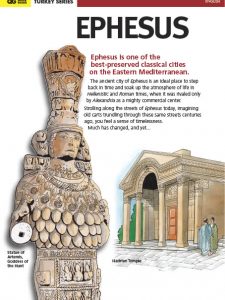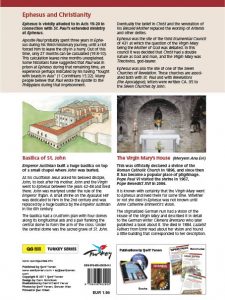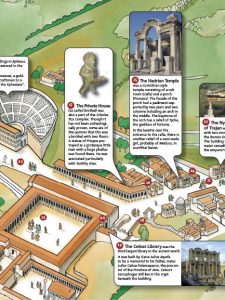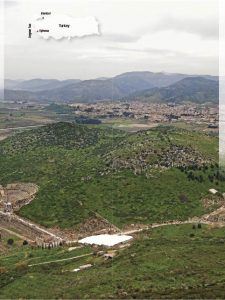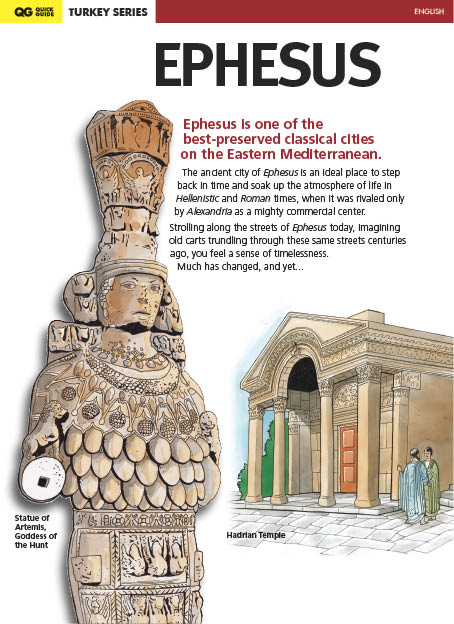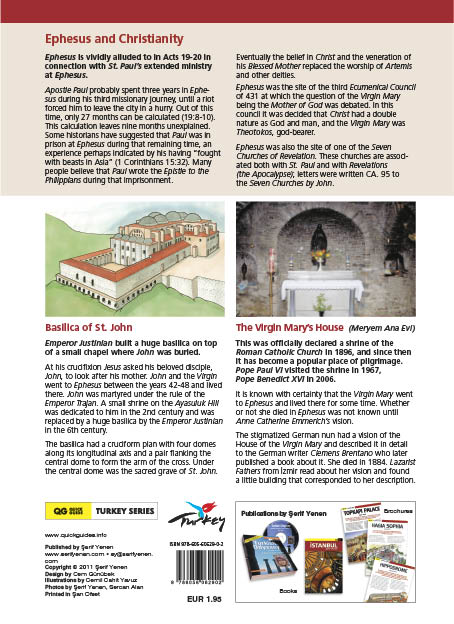Ephesus
Ephesus (Efes) was an ancient Greek city that later became a major Roman city located in what is now modern-day Turkey. It is one of the most well-preserved and important archaeological sites in the world, offering insights into the ancient cultures and civilizations that inhabited the region.
Ephesus Pamphlet
A user friendly and informative Pamphlet with illustrations and plans. Its content is very easy to understand. In addition to general information about the Ephesus area and the ancient city of Ephesus, Turkey, it shows the photos of all of the major monuments in and around the city. Information on the House of the Virgin Mary and the Basilica of St. John are also available in the pamphlet. Ephesus is only a little farther away from the port city of Kusadasi.
Buy Ephesus Pamphlet Pamphlet
ISBN: 978-605-60629-0-2 Quick Guide Ephesus (English, Turkish)
Available at Museum Shops in Turkey
Here’s an overview of Ephesus:
Historical Background: Ephesus was originally established as an Ionian Greek city around the 10th century BC. It later became part of the Roman Republic in the 2nd century BC and then a significant center of the Roman Empire. The city’s strategic location along the Aegean coast and its proximity to trade routes contributed to its importance.
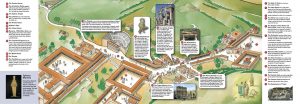 Archaeological Site: The ancient city of Ephesus is located near the modern town of Selçuk in Turkey. The archaeological site covers a vast area and includes numerous well-preserved structures and monuments, showcasing different periods of its history.
Archaeological Site: The ancient city of Ephesus is located near the modern town of Selçuk in Turkey. The archaeological site covers a vast area and includes numerous well-preserved structures and monuments, showcasing different periods of its history.
Key Features: Some of the most notable features and structures of Efes include:
- Celsus Library: A grand and iconic structure that once housed thousands of scrolls and served as both a library and a mausoleum for Celsus, a Roman senator.
- Theater: The Great Theater of Efes is one of the largest ancient theaters in the world, with a seating capacity of up to 25,000 people. It was used for various performances, including theatrical productions and political gatherings.
- Temple of Artemis: Although largely in ruins, the Temple of Artemis was one of the Seven Wonders of the Ancient World. It was a significant religious site dedicated to the goddess Artemis.
- Agora: The central marketplace and gathering place of the city, where social, commercial, and political activities took place.
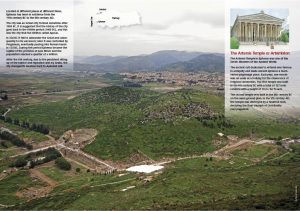 Houses of Efes : Some of the well-preserved houses in Efes , like the House of the Virgin Mary and the Terrace Houses, offer insights into the daily life of the city’s inhabitants.
Houses of Efes : Some of the well-preserved houses in Efes , like the House of the Virgin Mary and the Terrace Houses, offer insights into the daily life of the city’s inhabitants.- Marble Street: A beautifully preserved main thoroughfare lined with various statues, columns, and other architectural elements.
- Hadrian’s Temple: A temple dedicated to the Roman Emperor Hadrian, showcasing the architectural styles of the time.
Cultural and Historical Significance: Efes played a crucial role in the ancient world as a center of commerce, culture, and spirituality. It was a prominent hub for early Christianity, as the apostle Paul is believed to have visited and written letters to the Ephesians. The city’s archaeological remains provide valuable insights into the urban planning, architecture, and daily life of the people who lived there over the centuries.
Efes is a UNESCO World Heritage Site and a popular tourist destination, attracting visitors from around the world who are eager to explore its rich history and well-preserved ruins. The site serves as a testament to the achievements of ancient civilizations and offers a glimpse into the past that continues to captivate modern imaginations.


